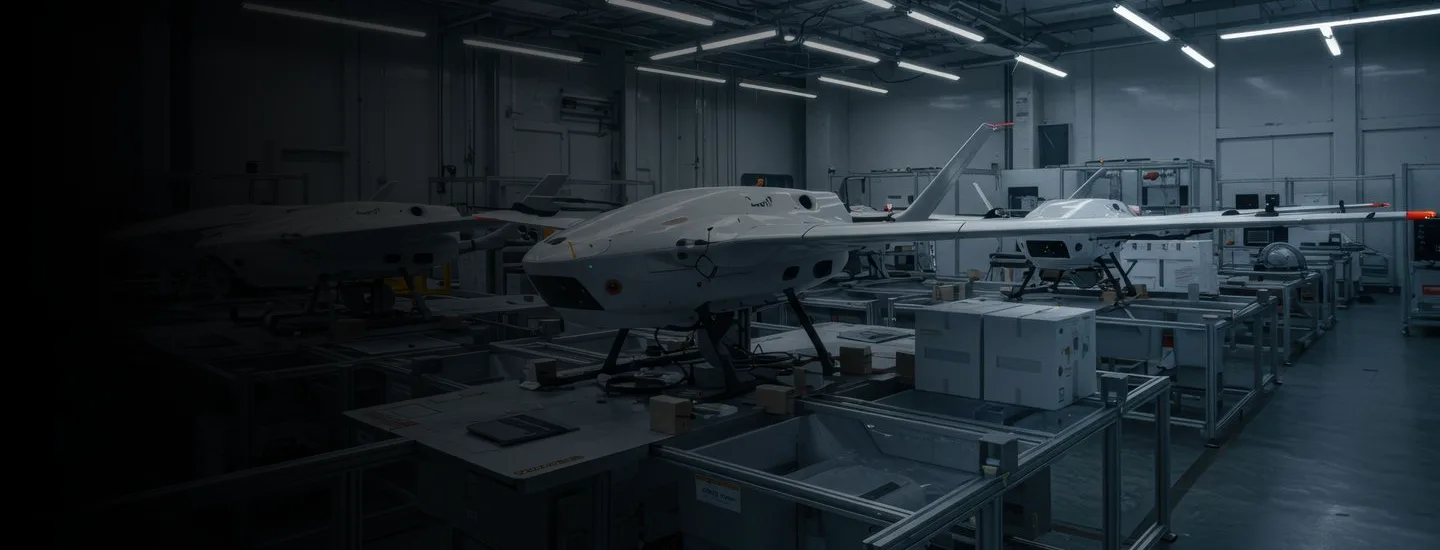For several years, the market, commentators, and the public have debated the slow decline of major defense primes. These companies have faced rising costs, stagnant budgets, supply chain constraints, societal changes, and aggressive disruptors. However, recent geopolitical tensions, including conflicts in Ukraine and the Middle East, and rising defense budgets suggest that now is the time for primes to reinvent themselves. This paper examines the background to this perception, the realities, and the steps primes can take to be in a better position.
Traditionally, defense procurement has been dominated by primes and governments working closely together. These relationships are heavily impacted by three core factors:
- Government-funded R&D: This often results in excessive customer interference, leading to over-specification of requirements and overly optimistic costs and timelines, particularly where cost plus contracting is applied. This typically produces high-end, exquisite products that are expensive, slow to develop, and subject to constant re-evaluation. The real issue is that primes, in turn, have cut their own IRAD spend for decades until very recently, reducing the drive for innovation.
- Program-centric mentality: With governments demanding top-line equipment and seeking to demonstrate value for money, traditional mindsets are program-centric. This means excessive focus on program management, milestone delivery, and spend. Paradoxically, this results in longer lead times, such that when platforms enter service, they may no longer be relevant to warfighter needs.
- Too close to bureaucracy: To win contracts, primes have developed relationships entwined with governmental bureaucracy. This has led to groupthink and a focus on box ticking for procurement organizations rather than listening not only to warfighter needs but also innovators across both the defense and civil markets. For example, since the unrestricted commercial market turned to software-defined products in the early 2010s, defense has been slow to follow, only recently recognizing benefits.
These factors have created behemoths that seek scale to deliver cost savings and that integrate products by acquiring competitors and smaller businesses. However, primes have not necessarily utilized their acquisitions correctly. Their sales teams are experts in navigating complex and bureaucratic government systems, leading to products and strategies that focus on government wants rather than what soldiers or countries need from their weapon systems.
Moltke’s adage is often quoted: ”No plan of operations extends with any certainty beyond the first encounter with the main enemy forces.” However, the key follow-up is often left out: ”Only the layman believes that in the course of a campaign he sees the consistent implementation of an original thought that has been considered in advance in every detail and retained to the end." This perfectly exemplifies Western governments' total faith in their systems, weapons, and training. As a result, primes have become aligned with this mindset. But current conflicts underscore the need for affordable, mass-produced, quickly adaptable, and more expendable weapons in combination with exquisite ones.
This shift in battlefield realities coupled with the geopolitical tensions that have significantly increased defense budgets (with NATO targeting 3.7% of GDP for defense and European defense budgets seeing an 11.4% real growth for 2024) has led to a step-change in the attractiveness of the defense market. This is particularly true in priority emerging technology areas as defined by NATO, including AI & autonomous systems, cyber, space, quantum, and Novel Weapon Systems. As a result, Silicon Valley-style disruptors and global enterprises have moved from dipping their toes in the market to a real focus on defense, resulting in increasingly crowded markets for these priority technologies.

The disruptors
Start-up disruptors approach the market differently, developing software-defined solutions and leveraging commercial market innovations to deliver modular, natively configurable, and updatable products from the outset. They adopt a product-focused approach delivered through an agile operating model and mostly self-fund their research and development. This aligns better with developing scalable, affordable, mass-produced products with continuous improvement and capability upgrades.
These solutions are delivered faster and cheaper compared to those built with existing legacy mindsets. While they may not meet all customer requirements or defense standards, they are often "good enough" at initial deployment, especially given the timeframe. A lower-cost 80-90% capability solution is becoming preferable to an expensive 100% exquisite solution in key areas.
However, the disruptors have the disadvantage of not understanding how to sell into governments with bureaucratic procurement processes, the long qualifications, and the shifting requirements from the military. While we have just identified this as a primary cause for the primes more staid approach, these challenges still need to be navigated until long-awaited acquisition transformations are delivered. While there have been multiple waves of attempts to fix procurement for decades in most NATO countries, it remains somewhat the holy grail.

It should be recognized that the middle sector on the continuum from exquisite and precious to affordable and attritable products is set to be an area of fierce competition as primes look to move down the curve and disruptors become emboldened and look to move up the curve as software becomes increasingly important to capability.
Can the primes rise to the challenge?
There is a once-in-a-generation moment here. War has arrived on European doorsteps; governments are spending as they once did in times of war and technologies and war fighter priorities are shifting rapidly. Here is our 10-point plan for primes:
- Rethink business models: Success in the emerging defense market requires a fundamental review of how primes generate value, from product development approaches and revenue generation models through to operational set ups and cost structures. These reviews need to come together into coherent business models.
- Review portfolios: Portfolios need to be reviewed with a disruptive lens and properly war-gamed. Those that don’t adapt their investment strategies risk not capitalizing on new profit pools and points of aggregation in the new, more digitally centric value chain.
- Increase IRAD: Significantly increase IRAD and apply a laser focus. Learn from large-scale modern war and internalize these lessons. Spend IRAD on what happens in war and develop lethal, effective, and good-enough starts.
- Increase appetite on risk: Defense primes have become process dominant in the main but with rapid innovation required, decisions to progress are often delayed while waiting on governments, with the more entrepreneurial characteristics subdued. Sometimes a bold move is required to really take advantage of the paradigm shift that defense is going through.
- Establish “NewCos”: Nurture new ways of working in a separate business of sufficient scale to move the dial, don’t just tweak at the edges, like many established primes have done in the past, struggling to deliver the step changes required in timescales available.
- Focus on emerging technologies: Increase focus on priority emerging technology areas, not to be here means you are not the value creators anymore.
- Move forward rapidly with inorganic activity: Quickly identify where to partner and what to buy. M&A is already oversubscribed, and valuations are climbing. This not only offers the fast track to remaining competitive but also provides routes to the various previously not addressable trading blocks or country-specific defense funds.
- Onshore capabilities: Nations will now more than ever want indigenous capability with resilient supply chains, support solutions, strong talent pipelines, and the ability to ramp up as required.
- Create adaptable ramp-up ability: Gone is the time when you set up production and put it on autopilot. Rapidly changing battlefield conditions dictate that products need to be adaptable and reactive, and modular build is necessary, so the base is prepared ready for final mile integration.
- Lobby government: Push for change in bureaucratic processes and layman views. Defense needs a loud voice to inform the civilian public, and primes have a part to play as a key part of the ecosystem, but don’t mix this with sales approach.
For a deeper discussion about the challenges and solutions associated with this topic, contact:
Eric Bernardini
Executive Partner & Managing Director; Aerospace, Defense, and Airlines
[email protected]
Stefan Ohl
Global Co-Lead; Aerospace, Defense, and Airlines
[email protected]
David Wireman
Global Co-Lead; Aerospace, Defense, and Airlines
[email protected]
Contact the authors:
Diane Shaw
Partner & Managing Director
[email protected]
Sita Sonty
Partner & Managing Director
[email protected]
Harry Malins
Partner
[email protected]
Alex Tarter
Director
[email protected]




